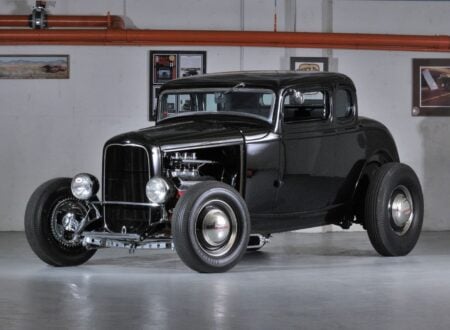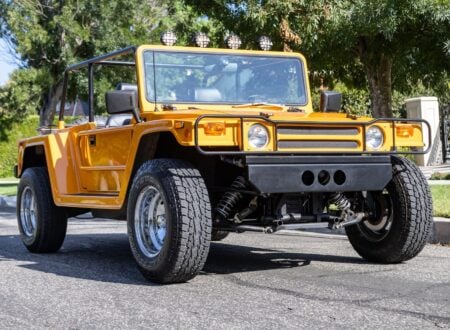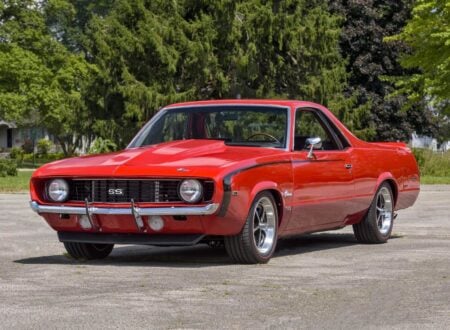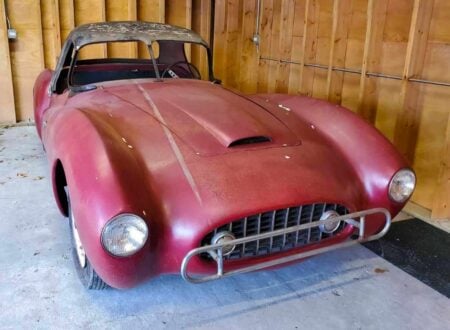This car started out as a notchback 1966 Ford Mustang, but it was recently rebuilt into a high-performance Fastback with a Coyote V8 pulled from a 2013 Mustang, capable of 412 bhp.
A slew of major changes have been made to the car to bring its performance well above the level it would have been back in the mid-1960s. Aside from the new engine, it also has an Eaton limited-slip differential, adjustable coilovers, TCI four-link rear suspension, and slotted discs on all four corners.
Fast Facts – An Upgraded 1966 Ford Mustang Fastback
- This 1966 Ford Mustang began life as a Notchback and but has now been transformed into a high-performance Fastback. It now features a 5.0 liter Coyote V8 from a 2013 Mustang, producing 412 bhp — offering performance that far surpasses the original 1960s version.
- Major upgrades include an Eaton limited-slip differential, adjustable coilovers, and a TCI four-link rear suspension. The Mustang also has 19” forged wheels and SN95-sourced drilled and slotted disc brakes, improving handling, braking, and overall performance for modern driving.
- The Ford Mustang became an American icon after its introduction in the 1960s. Models like the Shelby GT500, Boss 429, and Mach I cemented its status in performance car history. It created the Pony Car segment and influenced car design for generations.
- This highly-modified Mustang combines classic 1960s Fastback styling with modern performance upgrades. Its vastly improved power, handling, and braking make it considerably quicker than the original version. Currently for sale in Las Vegas, it comes with a clean California title, ready for its next owner.
The Ford Mustang
The Ford Mustang is a car that needs no introduction, it’s one of the most famous American sports/GT cars ever made, it founded the entire Pony Car genre, and Ford sold millions of them – and all that happened just in the 1960s.
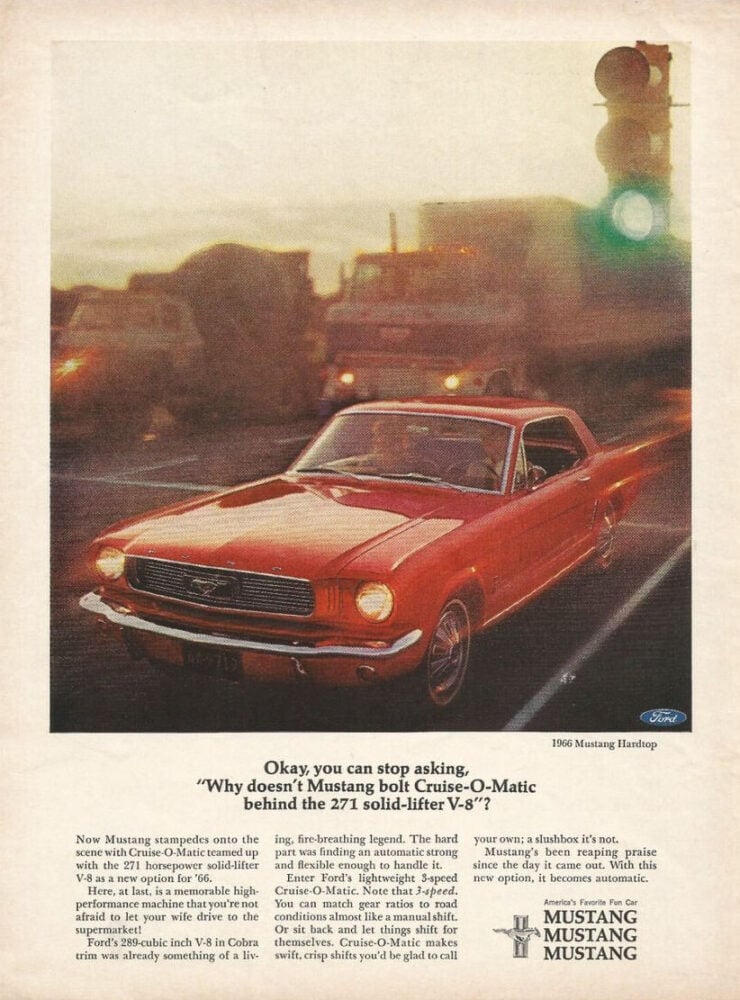

The 1960s would see the debut of the original Mustang, then the arrival of a number of special versions including the Shelby GT350, Shelby GT500, Boss 302, Boss 429, Mach 1, and more. The Mustang became the SCCA B-Production champion for three straight years from 1965 to 1967, firmly establishing its performance credentials in the process.
The Mustang would begin to lose its way by the time the 1970s arrived, the styling had changed so much that many of the Mustang faithful no longer recognized it, the performance took hit after hit due to increasingly strict emissions legislation, and in 1973 the Ford Mustang II arrived on the scene and disappointed an entire nation. Well perhaps that’s an exaggeration, though it’s fair to say the car isn’t widely loved today.
Despite its poor reputation, the Mustang II actually sold relatively well when it was in production. It was a smaller car with a more efficient engine – a major plus in the minds of car buyers in the wake of the 1973 Oil Crisis.
It seems the executives at Ford felt that it was more of a stopgap model however, and it would only be sold from 1973 until 1978 when it was replaced with the third generation model, better known as the Fox Body Mustang.
The Fox Body would remain in production over two major generations between 1979 and 1993, a remarkable 14 year run that was longer than the first and second generation Mustangs combined. The performance of the car was slowly restored during this time and arguably peaked with the Ford Mustang SVT Cobra.
The fourth generation Mustang appeared in 1993, based on an updated version of the previous model’s platform but now offering a vastly different looking body – a body that much more closely aligned with the overall design language of the 1990s.
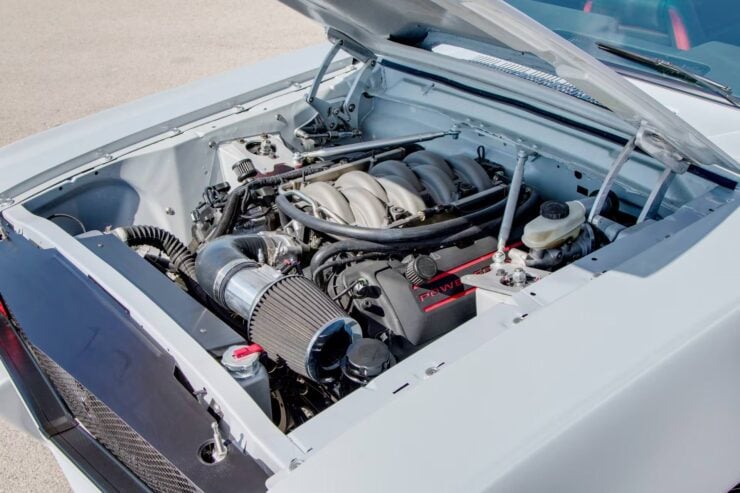

It would be the fifth generation Mustang in 2005 that brought the styling back to where it arguably should have been all along – back to the styling of the original 1960s-era models. Sales for the Mustang took off and it seems the executives at Ford realized, finally, that this is what the people wanted.
The Mustang is now in its seventh generation, and the styling has remained true to the original cars, though obviously updated for a modern audience. The underpinnings are now all thoroughly up to date of course, and the Mustang has become a best seller in a number of world markets.
The Coyote-Powered 1966 Mustang Fastback Shown Here
The car you see here may have started out as a standard 1966 Notchback (coupe) but it now benefits from a comprehensive rebuild that has improved its speed, handling, and stopping power all at once.
The original Notchback roof was replaced with a Fastback roof, a look more widely preferred. Wheel arch extensions were also added to cover the new forged 19″ two-piece wheels that are installed over SN95-sourced drilled and slotted discs front and back.
The original suspension was also completely revised, the car now has adjustable coilovers front and rear along with an aftermarket front K-member as well as a TCI four-link rear suspension. The primary reason these suspension and brake improvements were needed was to ensure the car would be able to handle the output from the Coyote V8 that had been sourced from a 2013 Mustang.
The 5.0 liter Coyote V8 is an entirely modern engine from Ford with an alloy block and heads, double overhead cams per bank, four valves per cylinder, and electronic fuel injection – a vast improvement over the older pushrod V8s with carburetors.
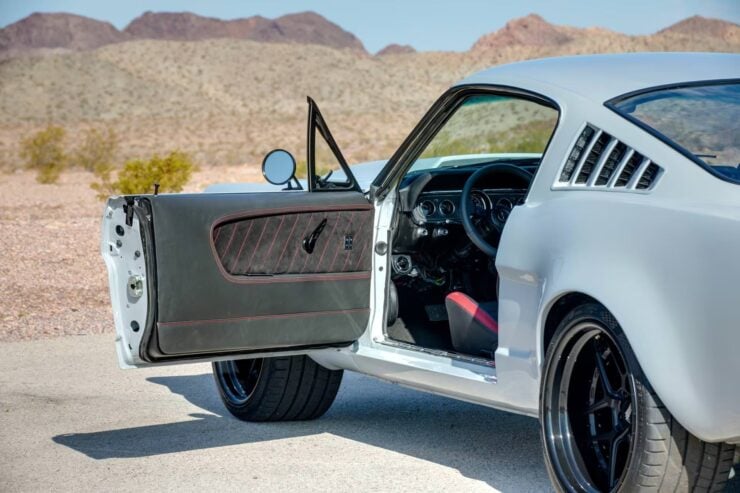

This version of the Coyote V8 is capable of 412 bhp at 6,500 rpm with 390 ln ft of torque on 91 octane fuel, and a little less on lower octane gasoline. This power output puts it way out in front of any Mustangs that were in production when this chassis was new – that’s up to and including the most powerful which at that time was the Shelby GT500 turning out 360 bhp with the Police Interceptor V8.
This highly-modified Mustang is now being offered for sale out of Las Vegas, Nevada with a clean California title in the seller’s name. If you’d like to read more about it or register to bid you can visit the listing here.
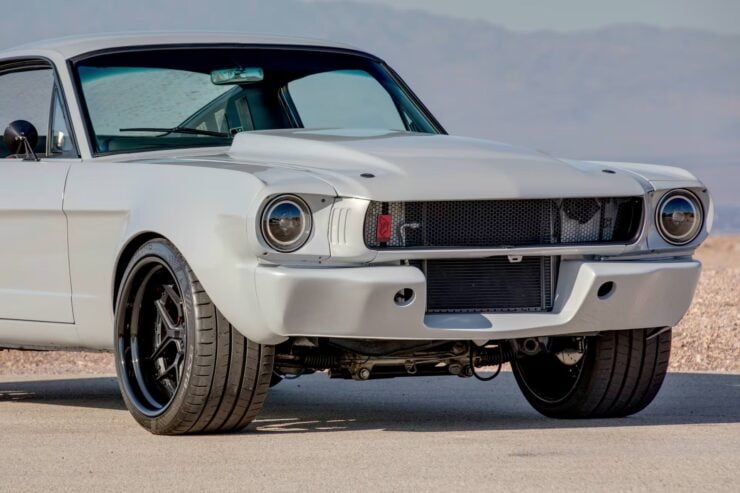
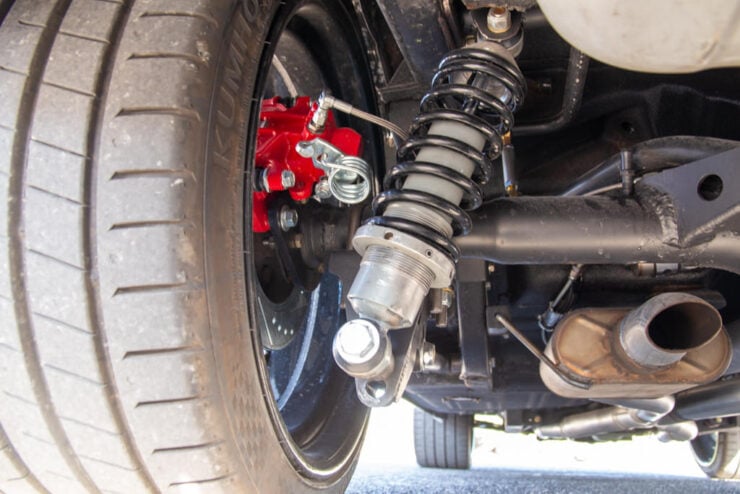
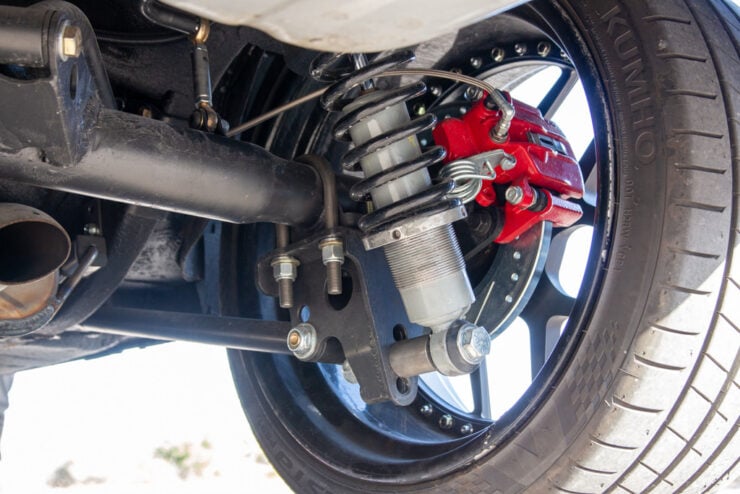
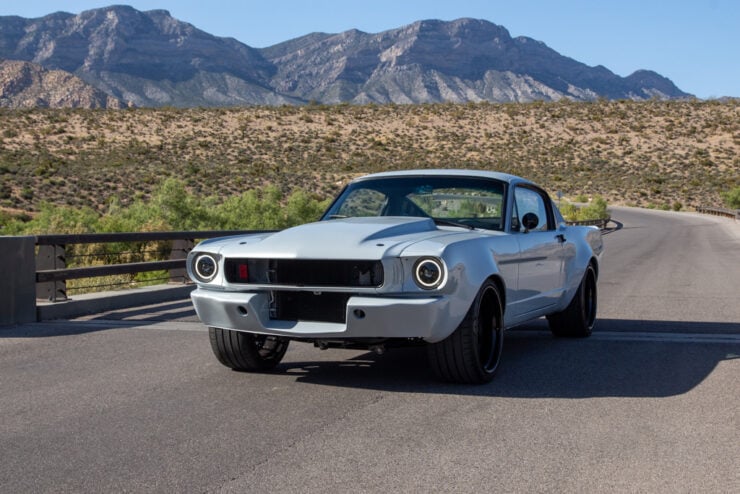
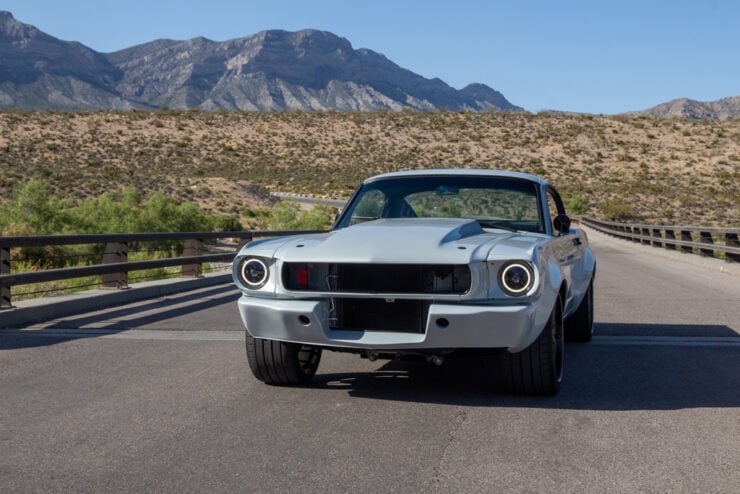
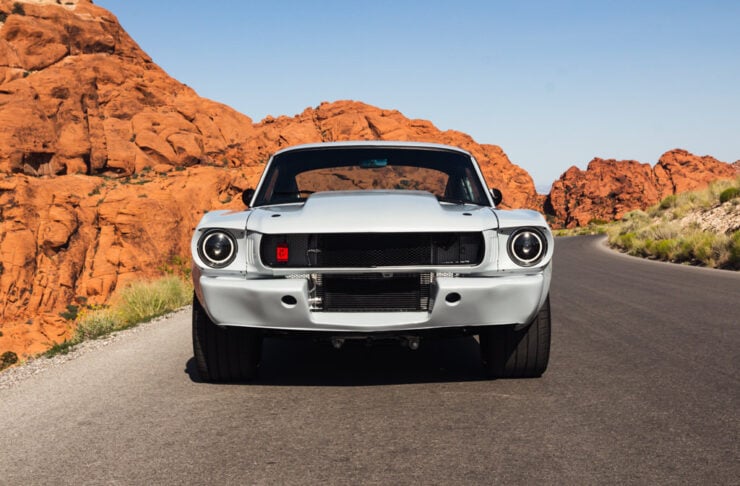
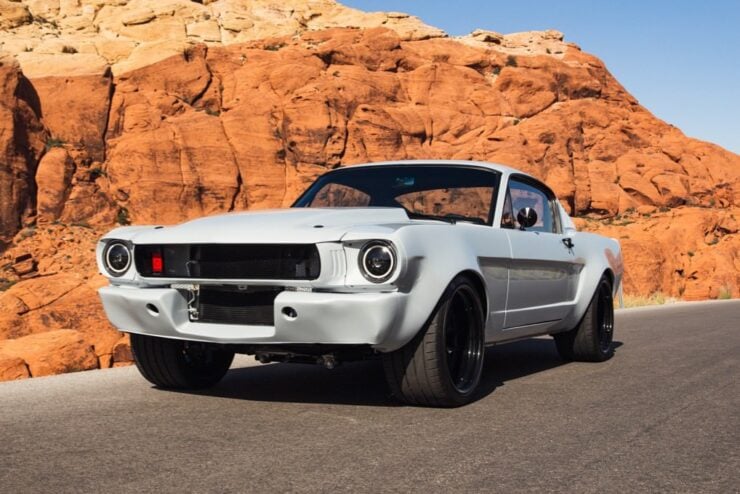
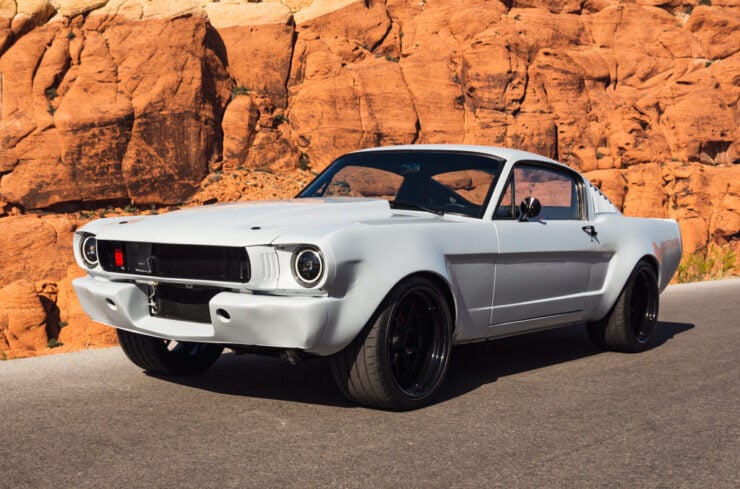
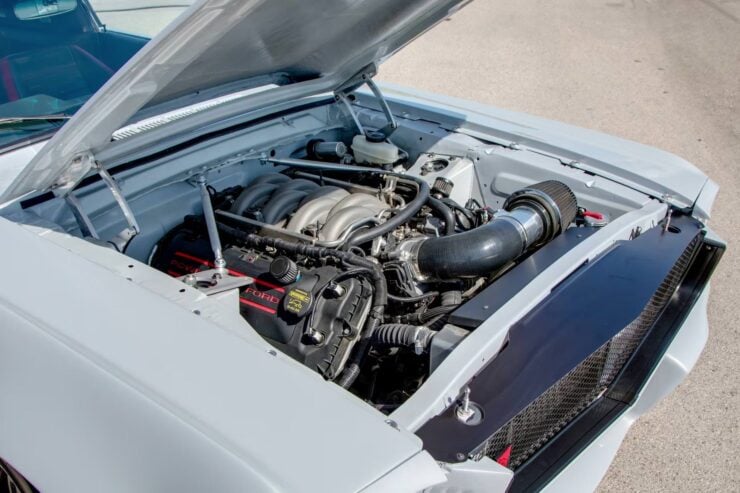
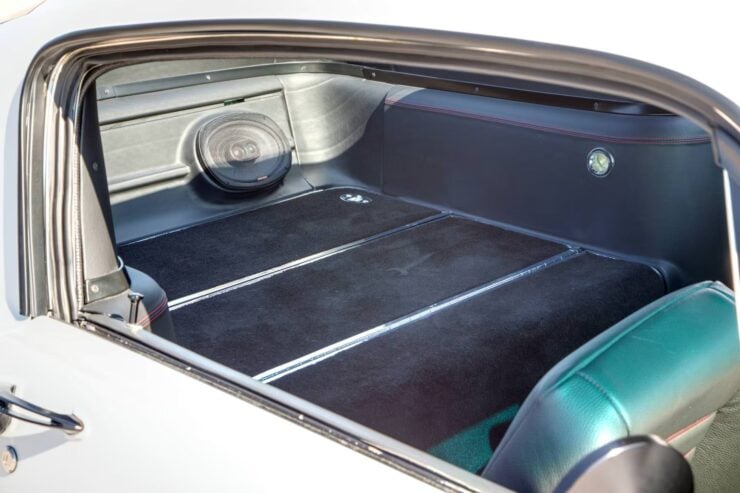
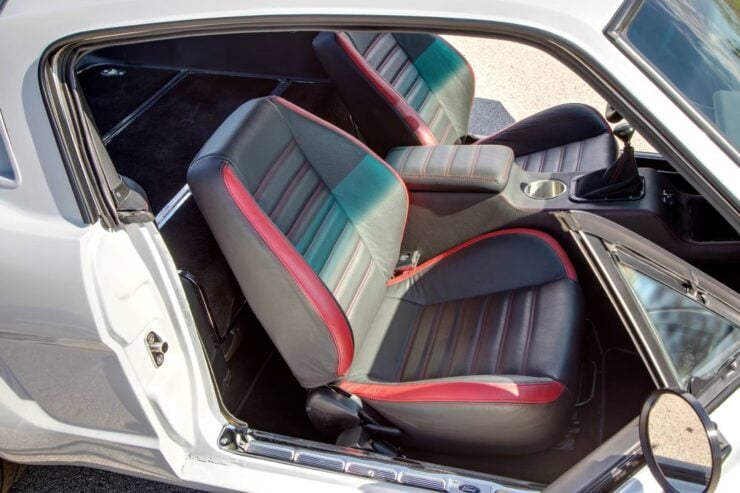
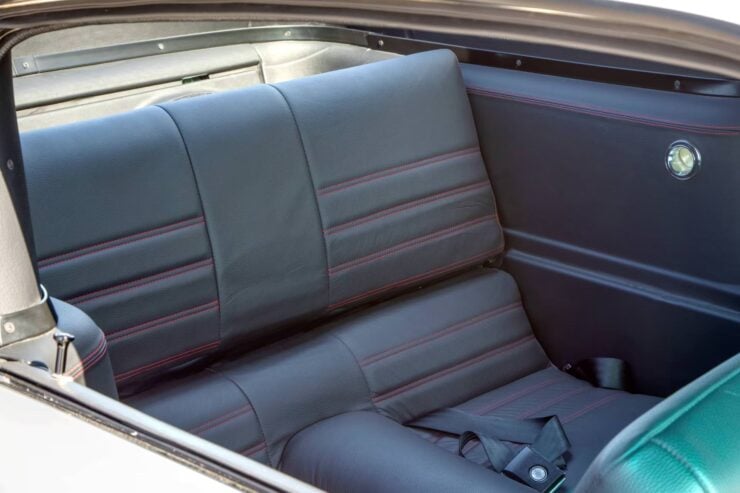
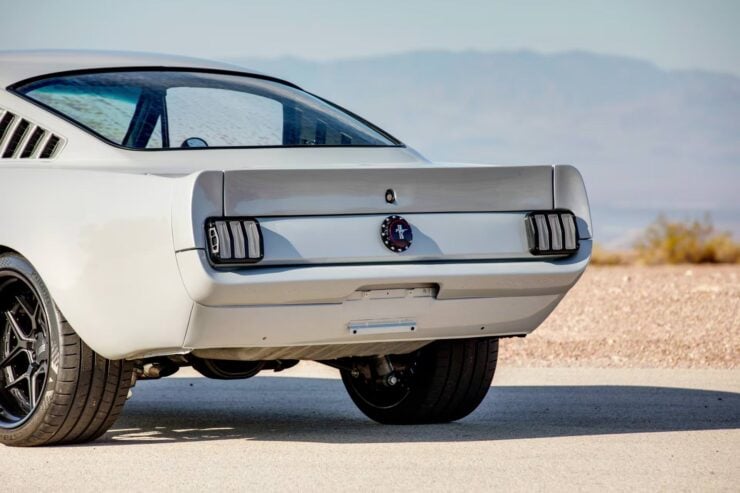
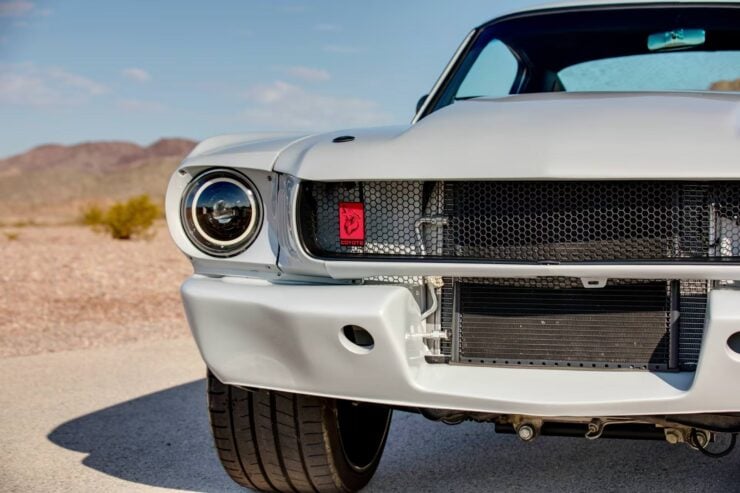
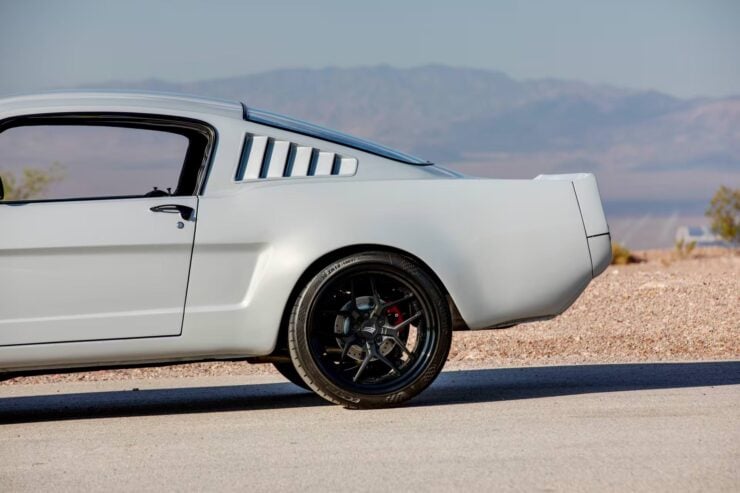
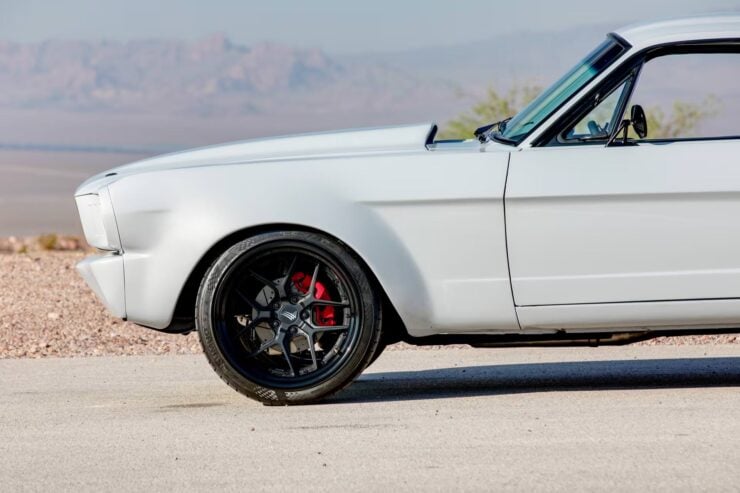
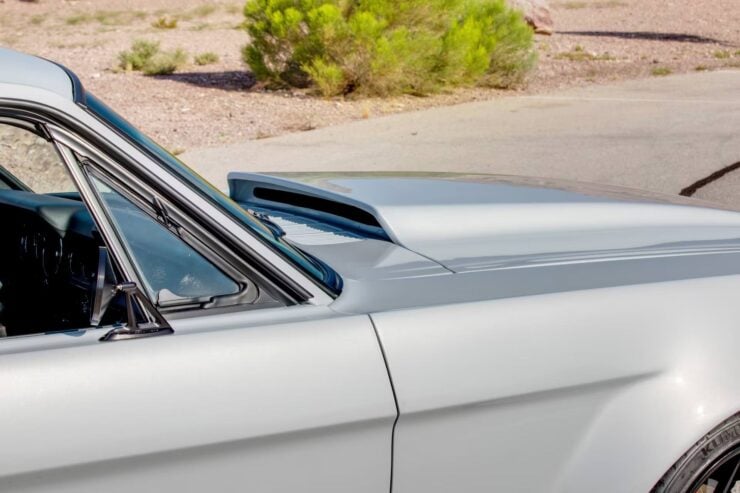
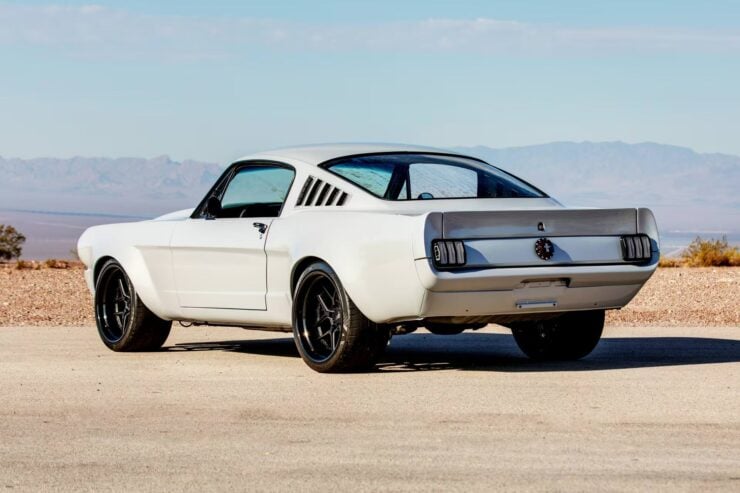
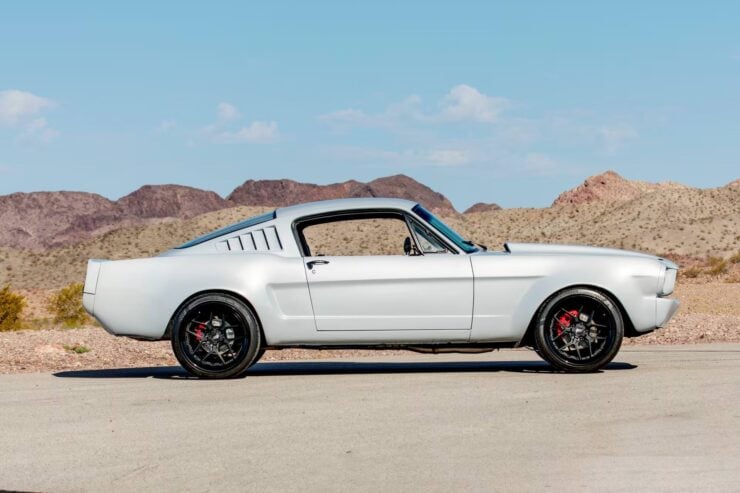
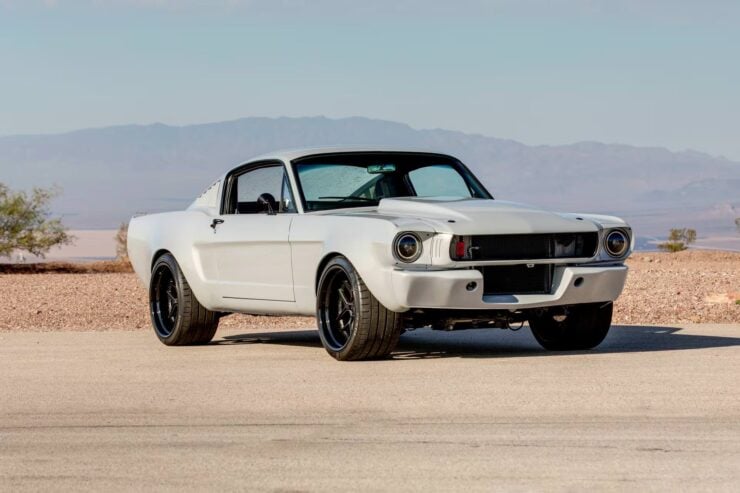
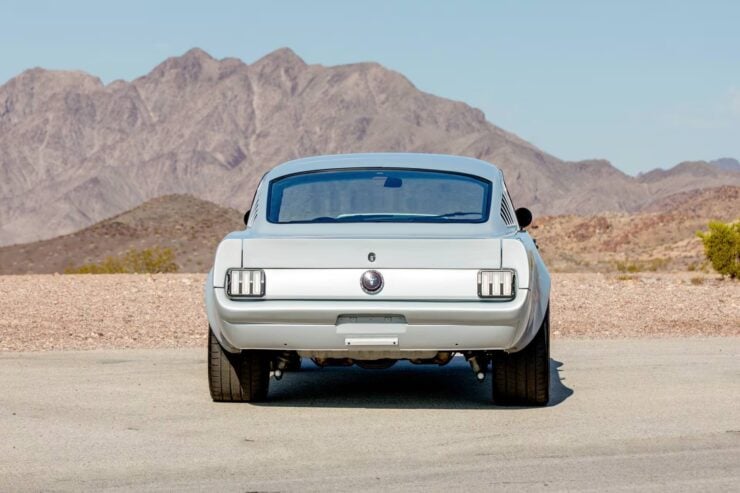
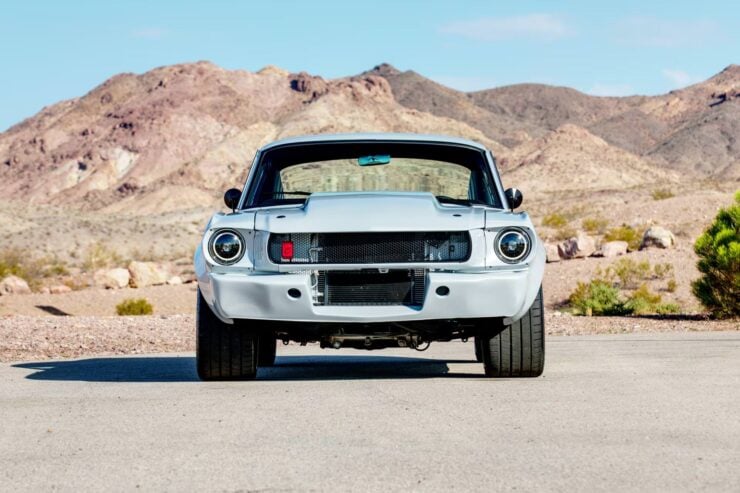
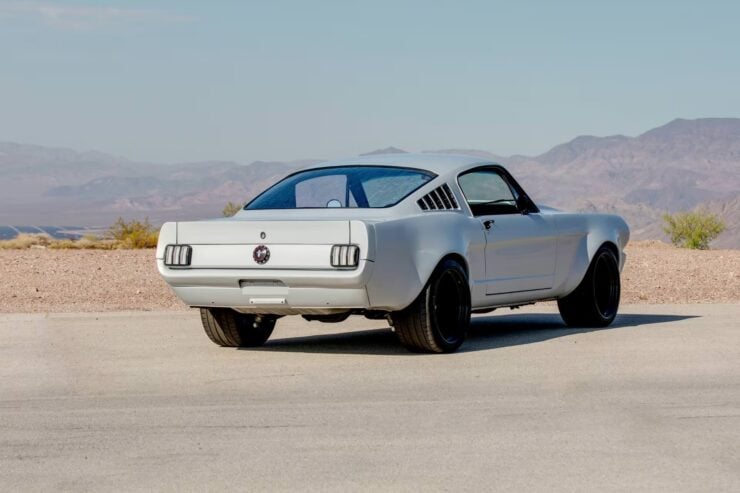
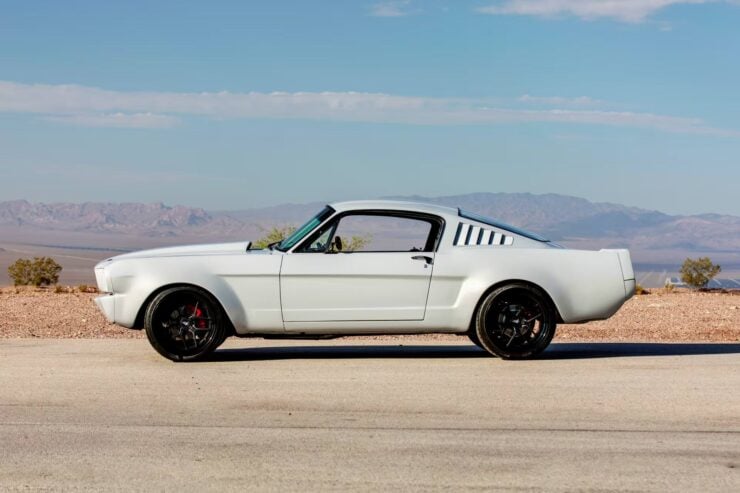
Images courtesy of Bring a Trailer



